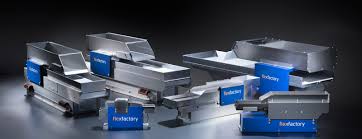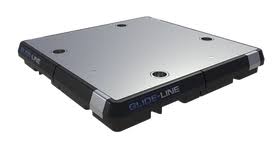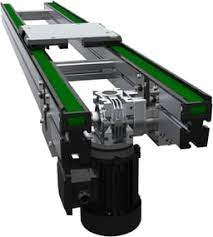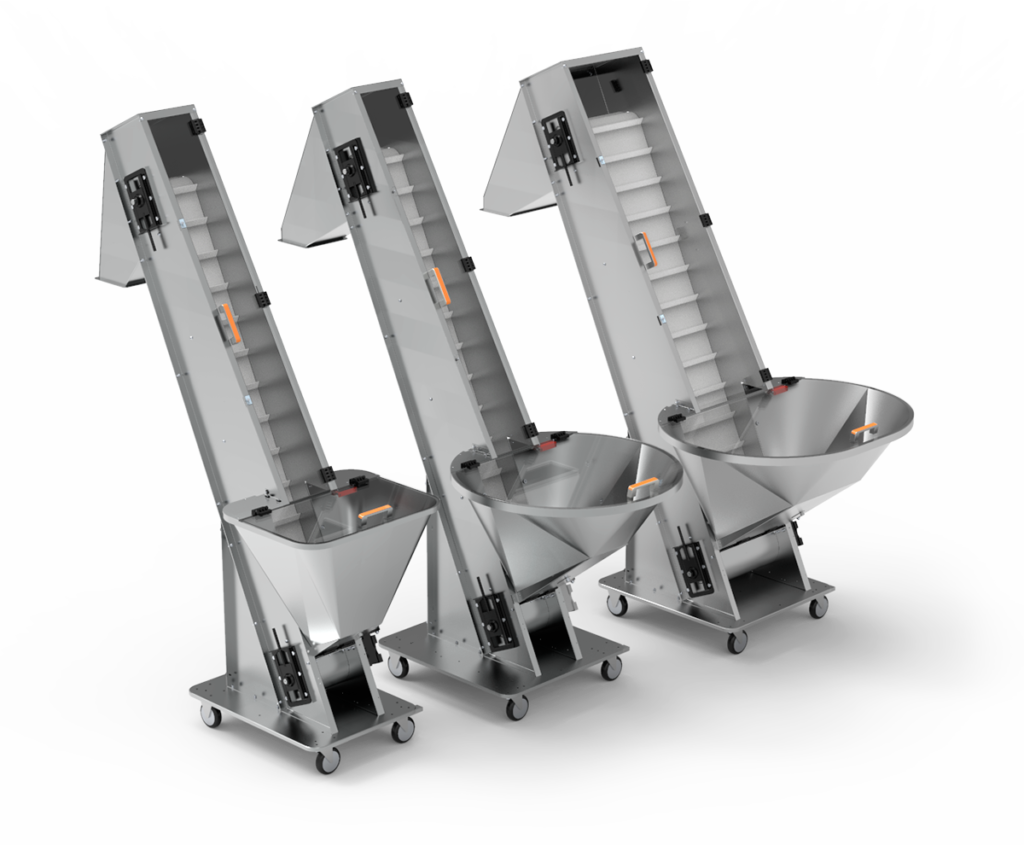High mix low volume is not always a consideration for automation especially when it comes to small parts. The question is why, and that answer is typically because automation requires customized tooling that is too costly for all the product variations associated with short runs. I would like to challenge that notion by leveraging a couple key components. We will be talking about the anyfeeder from FlexFactory and incorporating pallets on timing belt conveyors from Glide-Line.

The above image captures this concept very nicely. Let’s start with the FlexFactory anyfeeder. The FlexFactory feeder coupled with the FlexFactory feedware CX software running on a Cognex camera makes the feeder fully autonomous. The camera supplies the part coordinates to the robot, or 4 axis actuator, over the preferred field bus (ethernetIP, etc.). The simplicity of this tool makes for easy change overs, no special escapements the parts are singulated in the cameras field of view on the pick surface.
With regards to the field of view, the field of view is determined by the feeder size and camera mounting location. The anyfeeder is available in the following sizes and as a rule of thumb are sized by 3x the largest dimension of the parts to be fed (40mm feature x3 = SXM140). The anyfeeder model numbers indicate the size of the field of view and are:
- SXM50
- SXM100
- SXM140
- SXM200
- SX240
- SX340

The feeder and the camera work together to make sure the appropriate amount of candidate parts are in the field of view. Based on logic settings specified in the job recipe, the camera will instruct the feeder to dispense more parts into the field of view, flip, move forward, move backward or even flip the parts forward or backwards. The idea is to make sure there is at least one pickable part available each cycle.
anyfeeder / Glide-Line combination
The field of the view is the pick area, parts are identified using vision with a top light or back light depending on the requirements. Usually the cell is developed with both top and back lighting for high mix, so it’s most flexible. The pick area is compromised of a feed plate, often with a texture to help the parts settle very quickly. The color of the feed plate is important for top lighting to maximize part contrast. If back lighting is used to detect just the silhouette of the part, then a translucent plate must be used. Many of our customers use the infrared backlight, the feeder has an indicator on the side that illuminates when the backlight is on, since the IR wavelength is not detectable by the human eye. Other colors are white and red, and a band pass filter will be used on the camera so only the appropriate wavelength enters the camera, this mitigates ambient light fluctuations.

blank pallet, no nest or fixture

Once the parts are singulated and picked, we need to place them somewhere. The Glide-Line multi-strand timing belt pallet conveyor comes in. The pallet conveyor will ensure a pallet is in position for receiving components. Once all the locations on the pallet are filled, it moves to the next location and a new pallet takes its place. This next process could be a coating, pressing or dispensing operation.
Utilizing a pallet with replaceable 3d printed or machined nests, one can simply swap out the pallet and nest combination or just the nest depending on the requirements to optimize change overs.
Alternately, the parts can be placed on to a dial table from CDS. When a part is placed into the nest on the dial, it will index into position and work is performed. Here is an example of a dial table from CDS.
The pick and place scenario is the core of of almost every automation cell. With many cells focused on getting the bulk components into usable quantities for the next process. The flexfactory feeders are often times automatically replenished with elevated hoppers. These will ensure the anyfeeders stay running while attendants are away. Here is a link to the elevated hoppers from CDS.

If you would like to learn more about how we can help you with automation or details of product offering from FlexFactory, Glide-Line or CDS please contact George at george@futura-automation.com. We hope this article was useful in helping you automate your high mix low volume processes. Come see more at www.futura-automation.com.